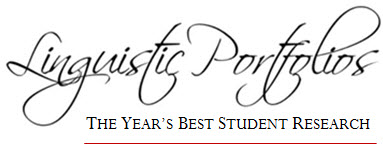
Abstract
The ability to use Fast Fourier Transform (FFT) and spectrographs to disentangle, measure, and visualize formants has had a profound and beneficial impact on fields as varied as signal processing, acoustic phonetics, speech pathology, speech synthesis, and voice biometrics. However, formants are relatively unknown to the average phonologist or linguist. This review is intended to explain the benefits of knowing formants and using them in the description of languages. The focus is on F1, F2, F3, and F4 because they are the most important formants. Yet, passing remarks are made about F5. Elements of the discussions include F0 (pitch) because, even though it is not a formant, it plays a supporting role to formants. The analyses and demonstrations provided in this paper are based on 2,904 formant tokens extracted from the speech of 22 speakers of American English, 17 females and 5 males.
Recommended Citation
Koffi, Ettien
(2024)
"A COMPREHENSIVE REVIEW OF FORMANTS: LINGUISTIC AND SOME PARALINGUISTIC APPLICATIONS,"
Linguistic Portfolios: Vol. 13, Article 2.
Available at:
https://repository.stcloudstate.edu/stcloud_ling/vol13/iss1/2


